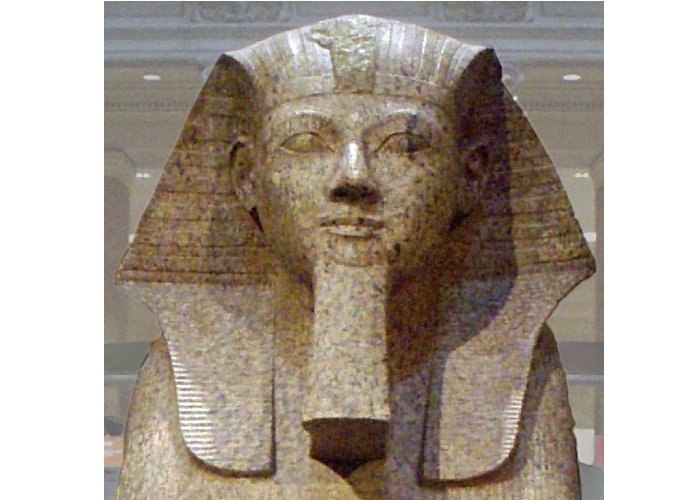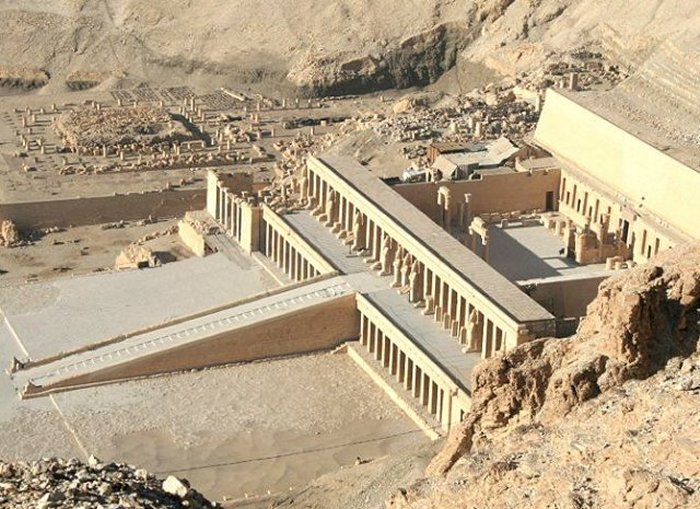Pharaoh Hatshepsut: Skillful And Efficient Female Ruler Who Brought Prosperity To Ancient Egypt
A. Sutherland - AncientPages.com - Hatshepsut, whose name means "Foremost of Noble Ladies," is a notable name in history.
She lived almost three and a half thousand years ago and ascended the throne of Egypt between 1512 BC and 1479 BC.
Credit: Public Domain
Her skills, efficiency, and personality made her one of the most intriguing and successful pharaohs that reigned in Egypt.
Hatshepsut Was A Clever Ruler
She was the queen of Pharaoh, King Thutmose II, and after he died, she quickly installed his son on the throne as Thutmose III (1458-1425 BC). She took the title of ‘regent’ because the boy was much too young to make any decisions. As she was not his mother, she could not rule in his name.
Based on the inscription of the vizier Ineni, architect, and government official of the 18th Dynasty, who during the reign of Hatshepsut, supervised several structures commissioned by her, she exercised her authority openly from the beginning and cited only her title God's Wife, which referred to her important function in the temple of Amun-Re and may have assured her the political support of that god's priests.
At some point, she decided to rule the country. She was crowned king, claimed a divine right to rule based on the authority of the god Amun and began to dress as a male pharaoh, and even wore the pharaoh's “beard’ that was part of their sign of power. She was the fifth pharaoh of the Eighteenth dynasty.
Credit: Public Domain
It is known that she was one of the best pharaohs that ever lived in Egypt. She ruled efficiently, wisely and brought success and prosperity to her land. As a pharaoh, she sent out several military expeditions mainly to the regions of Nubia and Syria and most probably to uphold the tradition of the pharaoh as a warrior-king bringing prosperity into the land through conquests.
Unlike the other pharaohs, she focused more on expanding the economy and negotiating peaceful relations with neighbors.
Expeditions And Building Projects
During her ninth year of reigning, she established the trade networks, which were only disrupted during the Hyksos invasion and occupation of Egypt during the Second Intermediate Period (c. 1782 - c.1570 BC).
She sent trading expeditions to the land of Punt, and returning ships were loaded with the finest goods such as myrrh, trees, ivory, and gold. Hatshepsut had several building projects, built new monuments, and restored some of the older structures throughout Egypt.
Perhaps one of her best building projects was the Mortuary Temple of Hatshepsut (also known as the Djoser-Djeseru (“holiest of holy places”), a masterpiece with terraced architecture and sculptures. It was dedicated to the god Amon and located at Deir el-Bahri ("the Northern Monastery"), near the Valley of the Kings, in western Thebes.
Hatshepsut ordered both constructions and restorations. The original Precinct of Mut dedicated to the ancient great goddess of Egypt was restored after it was badly damaged during the Hyksos occupation.
Thutmose III Made Attempts To Erase Her From Memory Of People
After more than two decades as principal ruler of Egypt, the reign of Hatshepsut ended with her death in 1458 BC. Both her death and the events that followed her passing are still shrouded in mystery. When scientists examined her flacon, they discovered an ancient secret shedding more light on her death.
Sometime after her death, her co-ruler, Thutmose III, ordered her name and images destroyed. The process of eliminating Hatshepsut's memory did not begin immediately after her reign was over, but it was a deliberate, carefully planned act.
It was made according to orders of her nephew, Thutmose III. He desired to erase her legacy and everything that was related to her, including inscriptions. No mortuary priests were appointed to perpetuate her cult, and her name was omitted in the king lists of Abydos.
Did he hate her so much? Was it perhaps revenge?
Memory Of Her Lost And Restored
Until the mid-nineteenth century, all memory of Hatshepsut's seemed to have been lost, but fortunately - not entirely. Archaeologists found some references to her and could begin the reconstruction of her place in history.
In 1902, archaeologists discovered her empty tomb. Many years later, two female mummies were discovered, but one of them has long remained unidentified.
In 2007, the DNA from the tooth of the unidentified mummy helped to confirm the identity of Hatshepsut.
Written by – A. Sutherland AncientPages.com Staff Writer
Updated on August 4, 2021
Copyright © AncientPages.com All rights reserved. This material may not be published, broadcast, rewritten or redistributed in whole or part without the express written permission of AncientPages.com
Expand for referencesReferences:
Dell, Hatshepsut: Egypt's First Female Pharaoh
Weaver, Ancient Egypt
More From Ancient Pages
-
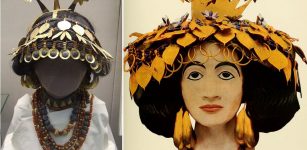 Mysterious Sumerian Queen Puabi And Her Magnificent Underground Burial Complex – Many Followed Her To Afterlife
Featured Stories | Oct 20, 2016
Mysterious Sumerian Queen Puabi And Her Magnificent Underground Burial Complex – Many Followed Her To Afterlife
Featured Stories | Oct 20, 2016 -
 Huge Viking Burial Discovered Beneath Streets Of Dublin
Archaeology | Aug 6, 2014
Huge Viking Burial Discovered Beneath Streets Of Dublin
Archaeology | Aug 6, 2014 -
 Rare Well-Preserved Viking Artifacts Lost On Mountain Pass – Revealed By Retreating Glaciers
Archaeology | Apr 16, 2020
Rare Well-Preserved Viking Artifacts Lost On Mountain Pass – Revealed By Retreating Glaciers
Archaeology | Apr 16, 2020 -
 Shakespeare ‘Borrowed’ Phrases From Little-Known Manuscript – Study Reveals
News | Mar 9, 2018
Shakespeare ‘Borrowed’ Phrases From Little-Known Manuscript – Study Reveals
News | Mar 9, 2018 -
 Clay Cylinders With Oldest Known Alphabet Unearthed In Ancient Syrian City Of Umm-el Marra
Archaeology | Nov 21, 2024
Clay Cylinders With Oldest Known Alphabet Unearthed In Ancient Syrian City Of Umm-el Marra
Archaeology | Nov 21, 2024 -
 Killer-Of-Enemies – Mysterious Non-Human Teacher And Hero Of The Apache Indians
Featured Stories | Nov 16, 2020
Killer-Of-Enemies – Mysterious Non-Human Teacher And Hero Of The Apache Indians
Featured Stories | Nov 16, 2020 -
 1,000 Ancient Sealings Linked To Graeco-Roman Pantheon Among Finds In Unidentified Church In Turkey
Archaeology | Dec 12, 2017
1,000 Ancient Sealings Linked To Graeco-Roman Pantheon Among Finds In Unidentified Church In Turkey
Archaeology | Dec 12, 2017 -
 ‘Viking Disease’ Hand Disorder May Come From Neanderthal Genes
Archaeology | Jun 14, 2023
‘Viking Disease’ Hand Disorder May Come From Neanderthal Genes
Archaeology | Jun 14, 2023 -
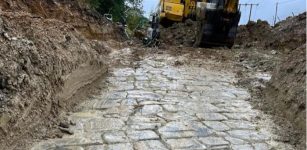 Hidden 2,000-Year-Old Roman Road Uncovered In Worcestershire Could Be Of ‘Global Importance’
Archaeology | Nov 12, 2022
Hidden 2,000-Year-Old Roman Road Uncovered In Worcestershire Could Be Of ‘Global Importance’
Archaeology | Nov 12, 2022 -
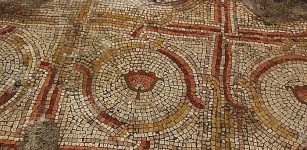 Ancient Mosaic Floor Decorated With Colorful Floral Designs Re-Uncovered After 40 Years
Archaeology | Mar 25, 2023
Ancient Mosaic Floor Decorated With Colorful Floral Designs Re-Uncovered After 40 Years
Archaeology | Mar 25, 2023 -
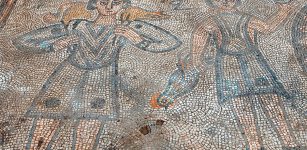 Mosaics Discovered In 1,600-Year-Old Church In Mardin Province,Turkey
Archaeology | Sep 22, 2020
Mosaics Discovered In 1,600-Year-Old Church In Mardin Province,Turkey
Archaeology | Sep 22, 2020 -
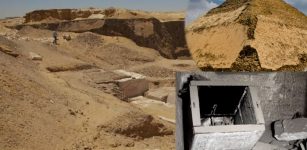 Mystery Of The Unbreached Burial Chamber Inside A Little-Known Pyramid In The Dashur Complex
Featured Stories | Mar 18, 2022
Mystery Of The Unbreached Burial Chamber Inside A Little-Known Pyramid In The Dashur Complex
Featured Stories | Mar 18, 2022 -
 Deciphered Ancient Cuneiform Tablets Reveal Locations Of Long-Lost Cities And Shed Light On The Secrets Of Mesopotamia
Places | Oct 20, 2024
Deciphered Ancient Cuneiform Tablets Reveal Locations Of Long-Lost Cities And Shed Light On The Secrets Of Mesopotamia
Places | Oct 20, 2024 -
 Mysterious Wise Pre-Flood Beings Who Gave Humans A Precious Gift – Did We Reject It?
Featured Stories | Mar 9, 2025
Mysterious Wise Pre-Flood Beings Who Gave Humans A Precious Gift – Did We Reject It?
Featured Stories | Mar 9, 2025 -
 Great Living Chola Temples: Outstanding Workmanship Of Chola Dynasty Builders Of South India
Civilizations | May 31, 2024
Great Living Chola Temples: Outstanding Workmanship Of Chola Dynasty Builders Of South India
Civilizations | May 31, 2024 -
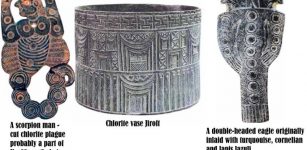 Is Mysterious Prehistoric Jiroft The Legendary Land Of Aratta?
Featured Stories | Aug 20, 2015
Is Mysterious Prehistoric Jiroft The Legendary Land Of Aratta?
Featured Stories | Aug 20, 2015 -
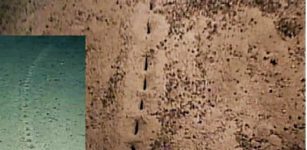 Who Or What Made These Mysterious Holes At The Bottom Of The Atlantic Ocean?
News | Mar 23, 2023
Who Or What Made These Mysterious Holes At The Bottom Of The Atlantic Ocean?
News | Mar 23, 2023 -
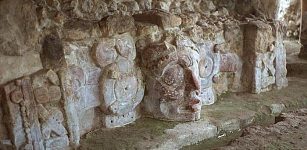 Edzna: Ancient Maya City With Sophisticated Underground System Of Canals To Control Unpredictable Floods
Featured Stories | Jun 2, 2021
Edzna: Ancient Maya City With Sophisticated Underground System Of Canals To Control Unpredictable Floods
Featured Stories | Jun 2, 2021 -
 Top 10 Archaeological Discoveries 2023
Archaeology | Dec 27, 2023
Top 10 Archaeological Discoveries 2023
Archaeology | Dec 27, 2023 -
 Brief History Of Abortion – From Ancient Egyptian Herbs To Fighting Stigma Today
Featured Stories | Oct 3, 2023
Brief History Of Abortion – From Ancient Egyptian Herbs To Fighting Stigma Today
Featured Stories | Oct 3, 2023


